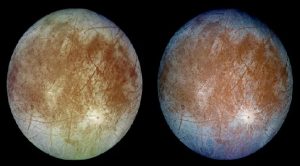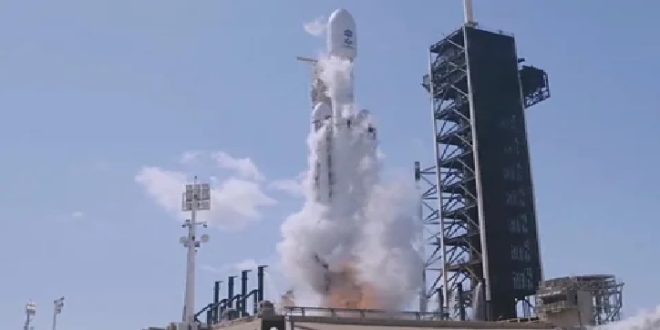16-10-2024
WASHINGTON: A spacecraft that will hunt for signs of alien life on one of Jupiter’s icy moons has blasted off from Cape Canaveral, Florida.
NASA launched the spacecraft at 12:06 local time (16:06 GMT) after hurricane Milton forced the mission to postpone plans last week.
 Europa Clipper will now travel 1.8 billion miles to reach Europa, a deeply mysterious moon orbiting Jupiter.
Europa Clipper will now travel 1.8 billion miles to reach Europa, a deeply mysterious moon orbiting Jupiter.
It will not arrive until 2030 but what it finds could change what we know about life in our solar system. Trapped under the moon’s surface could be a vast ocean with double the amount of water on Earth.
The spacecraft is chasing a European mission that left last year, but using a cosmic piggyback, it will overtake and arrive first.
Years in the making, the Europa Clipper launch was delayed at the last minute after hurricane Milton blasted Florida this week. The spacecraft was rushed indoors for shelter but after checking the launchpad at Cape Canaveral for damage, engineers have now given the go-ahead for lift-off at 12:06 local time (16:06 GMT).
“If we discover life so far away from the Sun, it would imply a separate origin of life to the Earth,” says Mark Fox-Powell, a planetary microbiologist at the Open University.
“That is hugely significant, because if that happens twice in our solar system, it could mean life is really common,” he says.
Located 628 million kilometres from Earth, Europa is just a bit bigger than our moon, but that is where the similarity ends.
If it was in our skies, it would shine five times brighter because the water ice would reflect much more sunlight. Its icy crust is up to 25km thick, and sloshing beneath, there could be a vast saltwater ocean. There may also be chemicals that are the ingredients for simple life.
Scientists first realized Europa might support life in the 1970s when, peering through a telescope in Arizona, they saw water ice.
 Voyager 1 and 2 spacecrafts captured the first close-up images, and then in 1995 NASA’s Galileo spacecraft flew past Europa taking some deeply puzzling pictures. They showed a surface riddled with dark, reddish-brown cracks, fractures that may contain salts and sulfur compounds that could support life.
Voyager 1 and 2 spacecrafts captured the first close-up images, and then in 1995 NASA’s Galileo spacecraft flew past Europa taking some deeply puzzling pictures. They showed a surface riddled with dark, reddish-brown cracks, fractures that may contain salts and sulfur compounds that could support life.
The Hubble space telescope has since taken pictures of what might be plumes of water ejected 100 miles (160 kilometers) above the moon’s surface but none of those missions got close enough to Europa for long enough to really understand it.
Now scientists hope that instruments on NASA’s Clipper spacecraft will map almost the entire moon, as well as collect dust particles and fly through the water plumes.
Britney Schmidt, professor of earth and atmospheric sciences at Cornell University in the US, helped to design a laser onboard that will see through the ice.
“I’m most excited about understanding Europa’s plumbing. Where’s the water? Europa has the ice version of Earth’s subduction zones, magma chambers and tectonics we’re going to try to see into those regions and map them,” she says.
Her instrument, which is called Reason, was tested in Antarctica but unlike on Earth, all the instruments on Clipper will be exposed to huge amounts of radiation which Prof Schmidt says is a “major concern.”
The spacecraft should fly past Europa about 50 times, and each time, it will be blasted with radiation equivalent to one million X-rays.
“Much of the electronics are in a vault that’s heavily shielded to keep out radiation,” Prof Schmidt explains.
The spaceship is the largest ever built to visit a planet and has a long journey ahead. Travelling 1.8 billion miles, it will orbit both the Earth and Mars to propel itself further towards Jupiter in what is called the sling-shot effect. (Int’l Monitoring Desk)
 Pressmediaofindia
Pressmediaofindia




